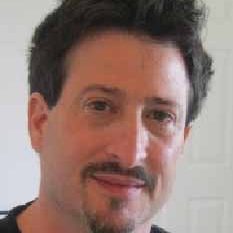Initial Job Objective: This was my first “real” job out of college.
Elliot Rosen, a senior consultant at Booz-Allen, recruited me from Wittenberg University and was my first mentor. My first six months At Booz Allen were quite stressful: a new location and a high pressure job with a blue suit consultancy. At first, I had no idea how to be a management consultant.
So, I put in time to figure it out and connect the dots. Elliot wrote me this note one evening when I felt compelled to stay late.

Challenge: Start my career, wear a suit every day, navigate DC, MD and northern VA, figure out what to do and how to do it, deal with daily intimidation of working with Military and Government leaders, obtaining Secret, Top Secret, and Special Access clearances.

Resolution: I struggled finding my footing for six months, was rated #1 of 8 at my level, received an unheard of “out of cycle salary action”, obtained security clearances, managed a large project with significant National Security implications, met Bell Labs people and decided I wanted to work there.
Skills Used: Project Management, Systems Engineering, Management Consulting, Technical Analysis, Software Testing, High Level Presentations, Proposal Writing, Navigating around the Pentagon, Technical Writing, Written & Verbal Communications, Multitasking, Research.

Technologies Involved: Radio Frequency Communications gear of the US Military, Microwave Line of Site Communications, Satellite Uplinks, Public Switched Network, INFO DBMS.
Why I left: To accept a position and OYOC appointment with AT&T Bell Labs and to obtain my Master’s in Electrical Engineering from the University of Pennsylvania.
Reconstituting the Public Network Following National Disaster
Pulling off the something as audacious as the Public Switched Network Reconstitution Demonstration was practically impossible. Not knowing that, I charged off and made it happen step by step.

Booz-Allen had been awarded a contract for National Security/Emergency Preparedness Communications in support of the National Communications System (NCS), a civilian agency within the Defense Communications Agency (DCA). The agency wanted to evaluate the likelihood of “reconstituting” the US public switched network (PSN) after a limited nuclear exchange.
The PSN handled all voice and data communications for the nation, including government and military communications. Booz-Allen had several ideas for establishing communications once the PSN was severed.
One of those ideas was to bridge the outage using mobile communications equipment of the US Military. The Army and Air Force use truck-based line-of-site microwave, radio, and satellite transmitters and receivers that are driven onto the battlefield and used to establish command and control communications there.

My supervisor, George Murray, a visionary, enthusiastic, retired Air Force Colonel, and a great boss, suggested this notion of using National Guard assets and personnel to staff the demonstration and to hold it during the National Guard’s annual two week summer training period, a win-win arrangement.
George and I then went about selling the idea to military leaders at the Pentagon. I briefed Generals and Admirals at the Pentagon in my hot, wool suits using old fashioned overhead projector slides. The generals designated the National Guard units from Arizona and Oklahoma to help with the project.

Once the concept was approved, I recruited the Oklahoma and Arizona National Guard units who would provide and staff the mobile tactical military communications assets.

Bell Labs engineers, who I identified and recruited via “cold calling”, worked with me to devise a way to simulate cutting a major PSN trunk and then put it back together with the tactical military equipment.

I also recruited a satellite company to provide a satellite link in the circuit and Hekimian Labs provided test equipment. When the time came to execute the demonstration, all the players gathered at the US Air Force Academy in Colorado Springs, CO, and Buckley ANG Base in Aurora, CO, and Nellis AFB outside Las Vegas, NV.

This is a diagram illustrates the technology and equipment configuration used in the demonstration. 
This diagram illustrates the circuit design for the demonstration.
Line of site microwave transmitter antenna.

So the demonstration would have the highest visibility and impact, I arranged to accompany the corporate and military brass as we flew around the battlefield in VIP military helicopters.

The actual deliverable for this project was a report documenting the demonstration from which these photos and diagrams are taken. 
In the eyes of our client, the National Communications System and Defense Communications Agency, the Public Switched Network Reconstitution Demonstration was quite successful in providing the agency with the visibility they wanted. Their leader, a Navy Admiral, honored my mentor, George, and I with a letter of commendation for our work on the project. The President of Booz-Allen also presented us a Booz Allen letter of commendation for this work.
A friend and fellow Wittenberg alumnus memorialized the project in art:

